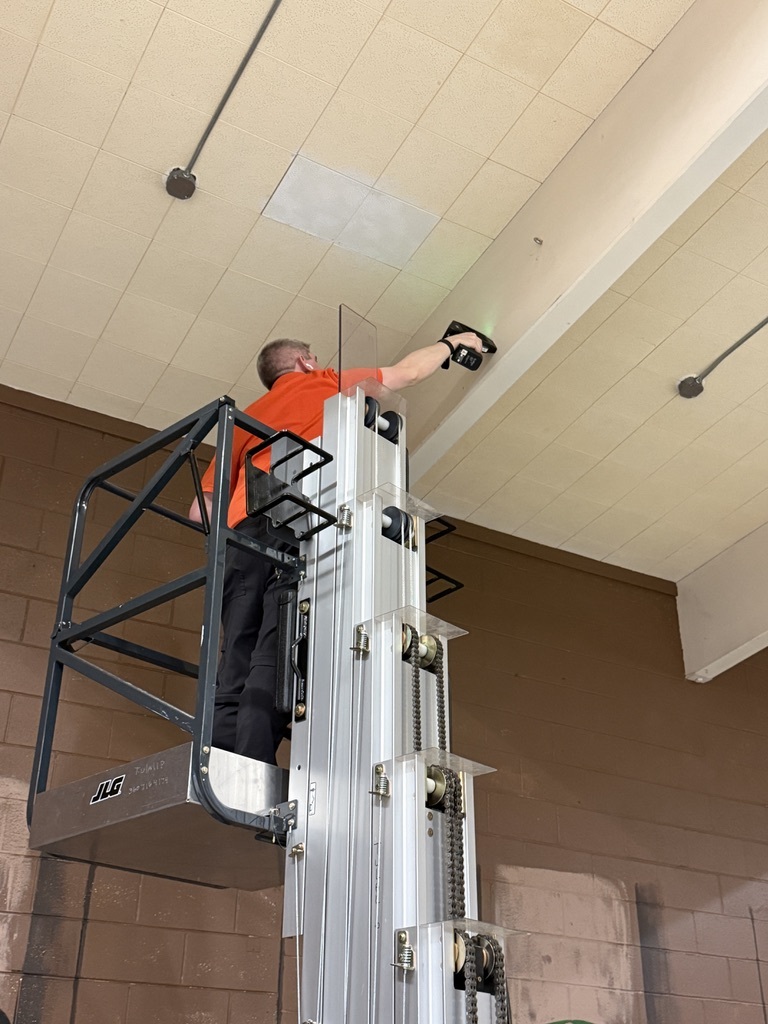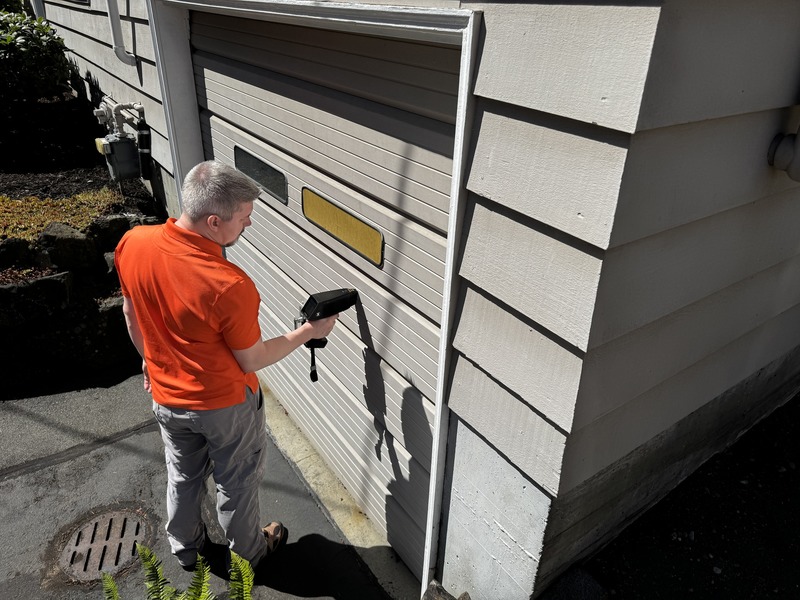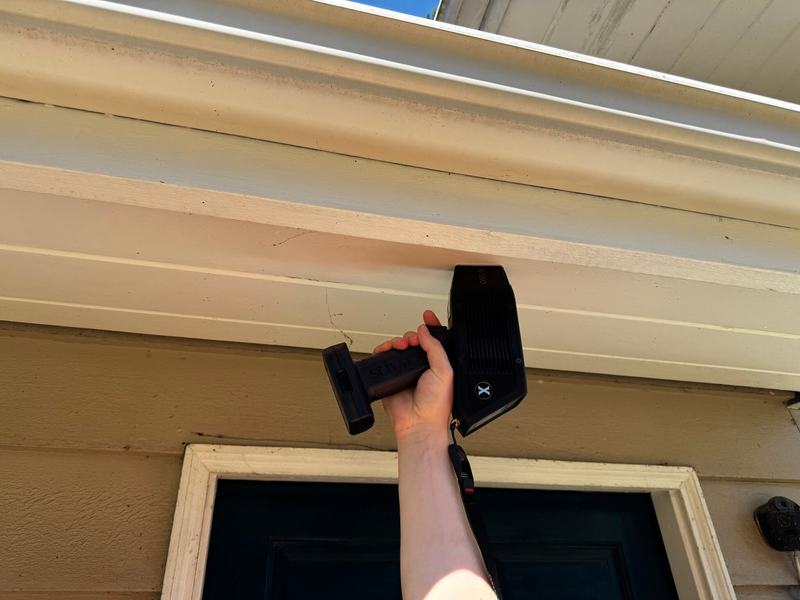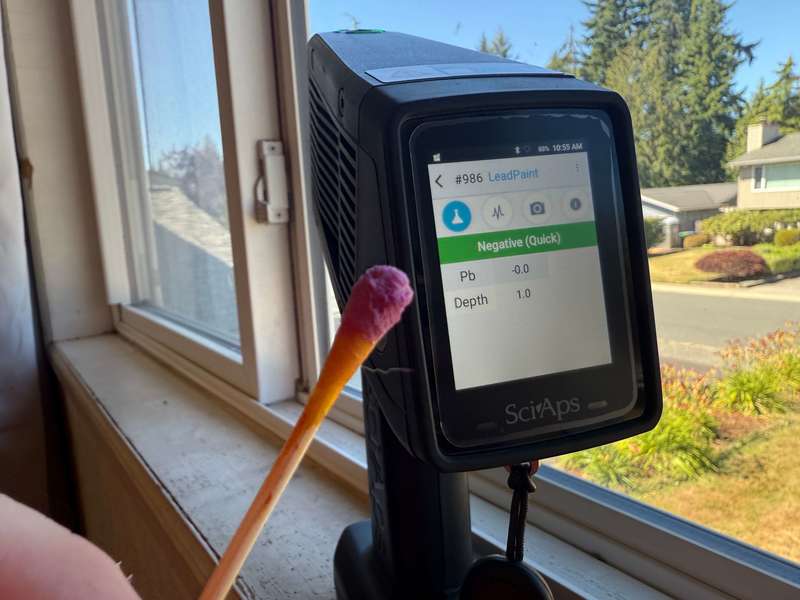EPA Updates to Lead Dust Standards: What You Need to Know for 2025
NEWS ALERT: On November 12, 2024, the EPA announced revisions to 40 CFR 745, lowering dust-lead hazard and clearance levels. These changes become effective January 13, 2025, and will directly impact lead clearance surveys, abatement practices, and laboratory reporting requirements.
Key Changes to EPA Lead Standards
-
Dust-Lead Hazard Standard renamed → Dust-Lead Reportable Levels
-
Dust-Lead Clearance Levels renamed → Dust-Lead Action Levels
-
New Action Levels (effective Jan. 13, 2025):
-
Definition of Abatement Revised: Abatement is now triggered when dust levels meet or exceed the new dust-lead action levels.
-
Abatement Reports Updated: Must include occupant education language about minimizing hazards after abatement.
-
Expanded Coverage: 0-bedroom dwellings where children under 6 may reside are now included.
Timeline for Authorized States
-
States with EPA-authorized lead programs, such as Washington, have until January 11, 2027 to align their standards.
-
Until then, certified inspectors and risk assessors in Washington must continue using WAC 365-230 standards (10/100/400 µg/ft²) unless the project is:
Why This Matters in Washington
-
Washington Standards (WAC 365-230): Currently less restrictive, but will eventually match EPA’s new levels.
-
Certified Individuals: Must continue referencing WAC 365-230 in reports until the rule is revised.
-
HUD Projects: Require the more restrictive EPA standards immediately.
Lead Dust Clearance After Renovation
Lead dust clearance is essential after:
-
Renovation, repair, or painting in pre-1978 housing.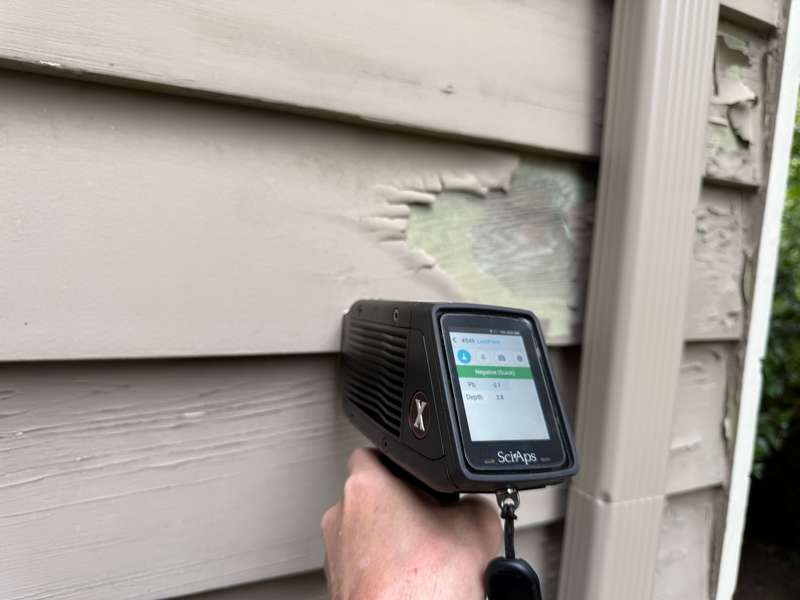
-
Hazard reduction activities in HUD-assisted housing.
Sample Collection Guidelines:
-
At least 1 windowsill and 1 floor sample per room/hallway/stairwell (up to 4 areas).
-
If windows were uncovered during work → include a window trough sample.
-
Always collect 1 adjacent floor sample outside the work area.
New Laboratory Requirements
Under NLLAP (National Lead Laboratory Accreditation Program):
-
Labs must demonstrate MRLs ≤ half the action level.
-
MDLs must be ≤ half the MRL.
-
Results below MRL must be reported as “< X µg/ft²” — not “ND” or “None Detected.”
Sampling Options to Meet New Floor Action Level (5 µg/ft²):
-
Labs may adopt new MDL/MRL thresholds, or
-
Inspectors may sample 2 ft² with one dust wipe and have labs report results at the 10 µg/2 ft² equivalent.
Penalties for Non-Compliance
Under the Renovation, Repair, and Painting (RRP) Rule:
-
Civil fines up to $37,500 per offense.
-
Criminal fines up to $37,500 plus jail time for willful violations.
Call Pacific Northwest Inspections Group
Need a lead clearance survey or guidance on EPA and Washington lead standards?
📞 Call us at 425-608-9553 today.
🌐 Schedule online: https://pnwig.com/
Our certified inspectors ensure compliance with EPA, HUD, and Washington State requirements.
Frequently Asked Questions: EPA Lead Dust Standards
❓ What are the new EPA lead dust levels for 2025?
❓ When do the new EPA standards take effect?
The updated dust-lead action levels become effective January 13, 2025.
❓ Do these rules apply in Washington State right now?
Not yet. Washington (an authorized state) must update WAC 365-230 by January 11, 2027. Until then, the state uses 10/100/400 standards, except for HUD-funded projects or federal/tribal lands, which follow EPA’s stricter rules.
❓ What is the difference between “reportable level” and “action level”?
❓ Who can perform lead dust clearance testing?
Clearance must be conducted by a certified lead dust sampling technician, risk assessor, or inspector. They must present proof of certification on-site.
❓ What happens if clearance fails?
If dust levels exceed the action levels, the area must be re-cleaned and re-tested until passing results are documented.
Washington State Code:
WAC 365-230-200
Work practice standards.
(1) Only certified individuals and the certified firms employing such individuals shall perform or offer to perform lead-based paint activities.
(2) Documented methodologies that are appropriate for this section are found in the following: The U.S. Department of Housing and Urban Development (HUD) Guidelines for the Evaluation and Control of Lead-Based Paint Hazards in Housing (Revised, July, 2012); the EPA Guidance on Residential Lead-Based Paint, Lead-Contaminated Dust, and Lead-Contaminated Soil; the EPA Residential Sampling for Lead: Protocols for Dust and Soil Sampling (EPA report number 7474-R-95-001); regulations, guidance, methods or protocols issued by this department; any other equivalent methods and guidelines.
(3) Clearance levels appropriate for the purposes of this section may be found in subsection (8)(g)(i) and (v) of this section or other equivalent guidelines.
(4) Work practice requirements. Applicable certification, occupant protection, and clearance requirements and work practice standards are found in regulations described in this section, and in regulations issued by the Department of Housing and Urban Development (HUD) at 24 C.F.R. part 35, subpart R.
(a) The work practice standards in those regulations do not apply when treating paint-lead hazards of less than:
(i) Two square feet of deteriorated lead-based paint per room or equivalent;
(ii) Twenty square feet of deteriorated paint on the exterior building; or
(iii) Ten percent of the total surface area of deteriorated paint on an interior or exterior type of component with a small surface area.
(b) When performing any lead-based paint activity described as a lead-based paint inspection, lead hazard screen, risk assessment or abatement, a certified individual must perform that activity in compliance with these rules, documented methodologies, work practice requirements, and the work practice standards described in this section.
(5) Inspection. Only a person certified by the department as an inspector or risk assessor may conduct an inspection.
(a) Locations shall be selected according to documented methodologies and tested for the presence of lead-based paint as follows:
(i) In target housing and child-occupied facilities, each interior and exterior component with a distinct painting history shall be tested for lead-based paint, except those components determined to have been replaced after 1978 or determined to not contain lead-based paint; and
(ii) In a multifamily dwelling or child-occupied facility, each component with a distinct painting history in every common area shall be tested, except those components determined to have been replaced after 1978 or determined to not contain lead-based paint.
(b) Paint shall be tested for the presence of lead using documented methodologies which incorporate sampling quality control procedures and all paint chip, dust, and soil samples shall be analyzed for detectable levels of lead by a laboratory accredited under the National Lead Laboratory Accreditation Program (NLLAP).
(c) Inspection reports shall be prepared and include at least:
(i) Inspection date;
(ii) Building address;
(iii) Date of construction;
(iv) Apartment identification (numbers, letters, names if applicable);
(v) Name, address and telephone number of owner or owners of each unit;
(vi) Name, signature, and certification number of each inspector or risk assessor conducting testing;
(vii) Name, address and telephone number of the certified firm employing each inspector or risk assessor;
(viii) Each testing method and device or sampling procedure employed for paint analysis, including sample quality control data, and if used, the serial number of any X-ray fluorescence (XRF) device; and
(ix) Specific locations of each painted component tested and the results of the inspection expressed in appropriate units for the sampling method used.
(6) Lead hazard screen. A lead hazard screen shall be conducted only by a person certified by the department as a risk assessor and shall be conducted as follows:
(a) Background information shall be collected about the physical characteristics of the target housing or child-occupied facility and occupant use patterns that may cause lead-based paint exposure to one or more children age six years and under shall be collected.
(b) A visual inspection shall be conducted to determine the presence of any deteriorated paint and locate at least two dust sampling locations.
(c) If deteriorated paint is present, each deteriorated paint surface determined using documented methodologies, and to have a distinct painting history shall be tested for the presence of lead.
(d) In residential dwellings, two composite dust samples shall be collected, one from the floors and the other from the windows, in rooms, hallways or stairwells where one or more children age six or under are likely to come in contact with dust.
(e) In multifamily dwellings and child-occupied facilities, floor and window composite dust sampling shall be conducted as specified for conducting lead hazard screens in residential dwellings in the Work Practice Standard section of these rules. In addition, composite dust samples shall be collected in common areas where one or more children age six or under are likely to come in contact with dust.
(f) All dust samples shall be collected using documented methodologies that incorporate sample quality control procedures and analyzed by a laboratory accredited under the National Lead Laboratory Accreditation Program (NLLAP) to determine detectable lead.
(g) A lead hazard screen report shall be prepared by the risk assessor and include:
(i) Information in a risk assessment report as specified in subsection (7) including (i)(i) through (xiv) and excluding (i)(xv) through (xviii). Additionally, any background information collected pursuant to the lead hazard screen shall be included.
(ii) Any recommendations for follow-up risk assessment and other further actions.
(7) Risk assessment. Only an individual certified by the department as a risk assessor may conduct a risk assessment of target housing or child-occupied facility. A risk assessment shall be conducted as follows:
(a) A visual inspection shall be conducted to locate the existence of deteriorated paint, assess the extent and cause of deterioration, and other potential lead-based hazards.
(b) Background information shall be collected regarding the physical characteristics and occupant use patterns that may cause lead-based paint exposure to one or more children age six years and under.
(c) The following surfaces which are determined, using documented methodologies, to have a distinct painting history, shall be tested for the presence of lead:
(i) Each friction surface or impact surface with visibly deteriorated paint.
(ii) All other surfaces with visibly deteriorated paint.
(d) In residential dwellings, dust samples (either composite or single-surface samples) from the interior window sill(s) and floor shall be collected and analyzed for lead concentration in all living areas where one or more children, age six and under, are most likely to come in contact with dust.
(e) For multifamily dwellings and child-occupied facilities, the samples required in "residential dwellings" as described in (b) of this subsection shall be taken. In addition, interior window sill and floor dust samples (either composite or single-surface samples) shall be collected and analyzed for lead concentration in the following locations:
(i) Common areas adjacent to sampled target house or child-occupied facility; and
(ii) Other common areas in the building where the risk assessor determines that one or more children, age six and under, are likely to come in contact with dust.
(f) For child-occupied facilities, interior window sill and floor dust samples (either composite or single-surface samples) shall be collected and analyzed in each room, hallway or stairwell utilized by one or more children, age six and under, and in other common areas in the child-occupied facility where the risk assessor determines one or more children, age six and under, are likely to come in contact with dust.
(g) Soil samples shall be collected and analyzed for lead concentrations from the following locations:
(i) Exterior play areas where bare soil is present; and
(ii) The rest of the yard (i.e., nonplay areas) where bare soil is present.
(h) Any paint, dust or soil sampling or testing shall be conducted using documented methodologies that incorporate sample quality control procedures and analyzed by a laboratory accredited under the National Lead Laboratory Accreditation Program (NLLAP) to determine detectable lead.
(i) The certified risk assessor shall prepare a risk assessment report which shall include as a minimum the following information:
(i) Assessment date.
(ii) Address of each building.
(iii) Date of construction of buildings.
(iv) Apartment identification (numbers, letters, names if applicable).
(v) Name, address and telephone number of each owner of each building.
(vi) Name, signature, and certification number of each risk assessor conducting the assessment.
(vii) Name, address and telephone number of the certified firm employing each risk assessor.
(viii) Name, address and telephone number of each laboratory conducting analysis of collected samples.
(ix) Results of the visual inspection.
(x) Testing method and sampling procedure employed for paint analysis.
(xi) Specific locations of each painted component tested for the presence of lead.
(xii) All data collected from on-site testing, including quality control data, and if used, the serial number of any X-ray fluorescence (XRF) device.
(xiii) All results of laboratory analysis on collected paint, soil, and dust samples.
(xiv) Any other sampling results.
(xv) Any background information collected pursuant to subsection background information portion of the risk assessment work practice standard of this section.
(xvi) To the extent used as part of the lead-based paint hazard determination, the results of any previous inspections or analyses for the presence of lead-based paint, or other assessments of lead-based paint related hazards.
(xvii) A description of the location, type, and severity of identified lead-based paint hazards and any other potential lead hazards.
(xviii) A description of interim controls and/or abatement options for each identified lead-based paint hazard and a recommended prioritization for addressing each hazard. If the use of an encapsulant or enclosure is recommended, the report shall recommend a maintenance and monitoring schedule for the encapsulant or enclosure.
(8) Abatement. An abatement project shall be conducted only by certified individuals and the certified firms employing such individuals. Abatement shall be conducted as follows:
(a) A certified supervisor or project designer is required for each abatement project and shall be on-site during all worksite preparation and during post-abatement cleanup of work areas. At all other times, the certified supervisor or project designer shall be on-site or available by telephone, pager, or answering service, and be able to be present at the worksite in no more than two hours.
(b) The certified supervisor or project designer, as well as the certified firm employing that individual shall ensure that all abatement activities are conducted according to the requirements of these rules and all federal, state and local requirements.
(c) A certified project designer may replace and assume the responsibilities of a certified supervisor required for an abatement project. If a certified project designer provides supervision on an abatement project, the project designer shall be responsible for preparing the occupant protection plan and the abatement report.
(d) A written occupant protection plan shall be developed prior to all abatement projects, be prepared by a certified supervisor or project designer, be unique to each target housing or child-occupied facility, describe the measures and management procedures that will be taken during the abatement to protect the building occupants from exposure to any lead-based paint hazards. The written occupant protection plan shall be present at the project site and must be made available on demand for inspection.
(e) A scope of work for the abatement project shall be present at the project site and must be made available on demand for inspection.
(f) These work practices shall be restricted during abatement and paint removal:
(i) Open-flame burning or torching of lead-based paint is prohibited;
(ii) Uncontained hydro blasting or high-pressure washing of lead-based paint is prohibited;
(iii) Machine sanding or grinding or abrasive blasting or sandblasting of lead-based paint is prohibited unless used with high efficiency particulate air (HEPA) exhaust control which removes particles of 0.3 microns or larger from the air at 99.97 percent or greater efficiency;
(iv) Dry scraping of lead-based paint is permitted only in conjunction with heat guns or around electrical outlets or when treating defective paint spots totaling no more than two square feet in any room, hallway or stairwell or totaling no more than 20 square feet on exterior surfaces; and
(v) Operating a heat gun on lead-based paint is permitted only at temperatures below 1100°F.
(g) When soil abatement is conducted, if the soil is removed:
(i) The soil shall be replaced by soil with a lead concentration as close to local background as practicable, but less than 250 parts per million (<250 ppm).
(ii) The soil that is removed shall not be used as top soil at another residential property or child-occupied facility.
(iii) If the soil is not removed, the soil shall be permanently covered so as to be separated from human contact by the placement of a barrier consisting of solid, relatively impermeable materials, such as pavement, asphalt or concrete.
(h) Soil interim controls:
(i) Grass, mulch, shrubbery and other landscaping materials are not considered permanent covering, but may be used as interim controls that eliminate contact with bare soils.
(ii) Interim control measures are acceptable in areas where bare soils contain less than the current HUD abatement standard (see 24 C.F.R. part 35.1330 (f)(2)) for lead in soils, except in:
(A) A child's play area, or any bare soil area where a child under six years of age regularly plays. Interim control measures are not acceptable in these areas where soil lead levels exceed 250 ppm.
(B) A garden area, or any other area where bare soils produce edibles intended for human consumption. Interim controls are not acceptable in these areas where soil lead levels exceed 250 ppm.
(iii) On-going monitoring and evaluation of interim soil control measures must adhere to HUD Guidelines, as found in chapter 6.
(i) The following clearance procedures shall be performed only by a certified and licensed inspector or risk assessor and according to the following procedures:
(i) A visual inspection shall be performed to determine if deteriorated painted surfaces and/or visible amounts of dust, debris or residue are still present. If deteriorated painted surfaces or visible amounts of dust, debris or residue are present, these conditions must be eliminated prior to the continuation of the clearance procedures.
(ii) If exterior work on a project cannot be completed due to inclement weather or other factors, the project supervisor or designer may apply in writing to the department for authorization of a preliminary clearance. The application must include the following:
(A) The project address.
(B) The name and certification number of the abatement project supervisor or project designer.
(C) A description of the conditions that justify issuance of a waiver.
(D) A description of the abatement work that remains to be done on the project.
(E) A schedule for completion of the abatement work that remains to be done.
(F) A plan for monitoring and controlling potential lead-based paint contamination until work can be completed.
(G) At the conclusion of all work on a project for which preliminary clearance has been authorized, the project supervisor or designer shall present the department with documentation that clearance testing has been performed on exterior and interior areas according to these rules and that all clearance test results are below clearance levels.
(iii) Following the visual inspection and any post-abatement cleanup required in subsection (8)(i) of this section, clearance sampling for lead in dust shall be conducted. Clearance sampling may be conducted by employing single-surface sampling or composite sampling techniques.
(iv) Dust samples for clearance purposes shall be taken using documented methodologies that incorporate sample quality control procedures and shall be taken a minimum of one hour after completion of final cleanup activities.
(v) Post-abatement clearance activities shall be conducted based upon the extent or manner of work activities conducted in or on the target housing or child-occupied facility as follows:
(j) After conducting an abatement with containment between containment and noncontainment areas, one dust sample shall be taken from one interior window sill and from one window trough (if present) and one dust sample shall be taken from the floors of no less than four rooms, hallways or stairwells within the containment area. In addition, one dust sample shall be taken from the floor outside the containment area. If there are fewer than four rooms, hallways or stairwells within the containment area, then all rooms, hallways or stairwells shall be sampled.
(i) After conducting abatement with no containment, two dust samples shall be taken from no fewer than four rooms, hallways or stairwells in the residential dwelling or child-occupied facility. One dust sample shall be taken from one interior window sill and from one window trough (if present) and one dust sample shall be taken from the floor of each room, hallway or stairwell selected. If there are fewer than four rooms, hallways or stairwells within the target housing or child-occupied facility then all rooms, hallways or stairwells shall be sampled.
(ii) Following exterior paint abatement, a visual inspection shall be conducted. All horizontal surfaces in the outdoor living area closest to the abated surfaces shall be found to be cleaned of visible dust and debris. The surfaces shall be recleaned when visible dust and debris is present. The visual inspection shall be conducted to determine the presence of paint chips on the dripline or next to the foundation below any exterior abated surface. Paint chips, if present, shall be removed from the site and disposed of according to federal, state and local requirements.
(iii) The rooms, hallways or stairwells selected for sampling shall be selected according to documented methodologies.
(iv) The certified and licensed inspector or risk assessor shall compare residual lead levels (as determined by laboratory analysis) from each single surface dust sample with clearance dust levels as defined in these rules for lead in dust on floors, interior window sills, and window troughs, divided by half the number of subsamples in the composite sample. If the residual lead level in a single surface dust sample equals or exceeds the applicable clearance dust levels or if the residual lead level in a composite dust sample equals or exceeds the applicable clearance dust levels divided by half the number of subsamples in the composite sample, the components represented by the failed sample shall be recleaned and retested until clearance dust levels are met.
(v) The clearance levels for lead in dust are less than 10 µg/ft2 for floors, less than 100 µg/ft2 for interior window sills, and less than 400 µg/ft2 for window troughs.
(k) In a multifamily dwelling with similarly constructed and maintained residential dwellings, random sampling for the purposes of clearance may be conducted provided:
(i) The certified individuals who work on or clean the residential dwellings do not know which residential dwelling will be selected for the random sample.
(ii) The randomly selected residential dwellings shall be sampled and evaluated for clearance according to subsection (8)(i) of this section.
(iii) A sufficient number of residential dwellings are selected for dust sampling to provide a 95 percent level of confidence that no more than five percent or 50 of the residential dwellings (whichever is smaller) in the randomly sampled population exceeds the appropriate clearance dust levels.
(l) An abatement report shall be prepared by a certified and licensed supervisor or project designer and shall include as a minimum the following information:
(i) Start and completion dates of abatement.
(ii) The name, address and telephone number of each certified firm conducting the abatement and the name of each supervisor or project designer assigned to the abatement project.
(iii) The occupant protection plan.
(iv) The name, address and signature of each certified and licensed inspector or risk assessor conducting clearance sampling and the date(s) that clearance sampling was performed.
(v) The results of clearance sampling and all soil analyses and the name of each laboratory conducting analysis of collected samples.
(vi) A detailed written description of the abatement, including abatement methods, location of rooms and/or components where abatement occurred, reason for selecting particular abatement methods for each component, and any suggested monitoring of encapsulants or enclosures.
(m) A clearance report shall be prepared by a certified inspector or risk assessor. The clearance report shall include the following information:
(i) The property address where the clearance sampling occurred.
(ii) The abatement clean-up completion date and time.
(iii) The date and time of clearance sampling.
(iv) Name and certification number of each inspector or risk assessor conducting the clearance.
(v) The signature of the inspector or risk assessor conducting the clearance.
(vi) Name, address, telephone number, and certification number of the certified firm employing the inspector or risk assessor.
(vii) Results of the visual inspection.
(viii) Identification of containment or noncontainment applications.
(ix) Identification of location(s) where clearance samples were collected.
(x) Name, address, and telephone number of the laboratory analyzing the collected samples.
(xi) All results of laboratory analysis on collected samples, including quality control results.
(xii) Documented methodology used for sampling.
(9) Sampling. Any paint chip, dust, or soil samples collected pursuant to this section shall be collected by a certified inspector or risk assessor. Such sampling shall incorporate sample quality control procedures and the samples shall be analyzed by a laboratory accredited under the National Lead Laboratory Accreditation Program (NLLAP).
(10) Composite sample. Composite dust sampling may only be conducted when conducting a lead hazard screen, risk assessment, or post-abatement activities. If conducted, the composite dust samples shall consist of at least two subsamples, every component that is being tested shall be included in the sampling, and shall not consist of subsamples from more than one type of component.
(11) Reports or plans. All lead-based paint activity reports or plans shall be maintained by the certified firms or individual who prepared the report for no fewer than three years and six months.
(a) The following reports must be submitted to the department as specified in WAC 365-230-100 and 365-230-220:
(i) Notification of lead-based paint activities course to take place.
(ii) Notification of lead-based paint activities course that has taken place.
(iii) Notice of abatement.
(b) All reports required by these rules may be submitted on forms available from the department. The exhibit referred to in this rule is not printed in this WAC. Copies are available as follows from department of commerce:
Lead-Based Paint Program
P.O. Box 42525
Olympia, WA 98504-2525
Telephone number: 360-586-5323
Website: www.commerce.wa.gov/lead.






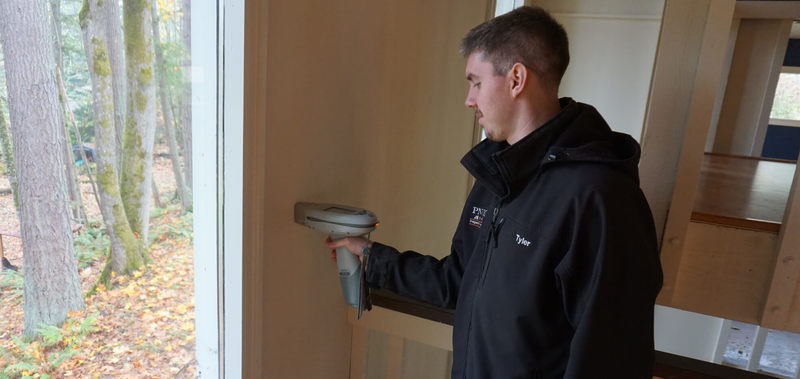

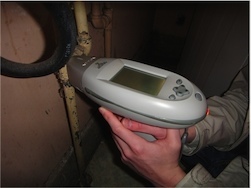
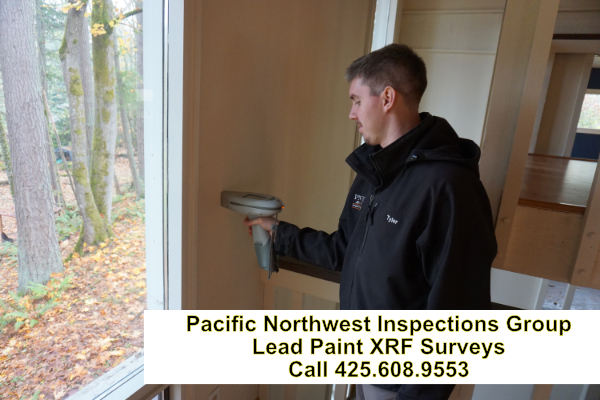
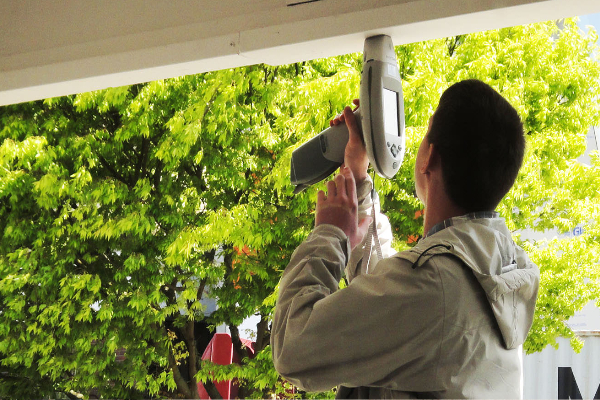 Legal and Financial Support for Housing Authorities
Legal and Financial Support for Housing Authorities
